Abstract
1 Comparison of phenytoin clearance showed a marked increase in people over 65 years of age compared with people under 45 years of age. 2 This difference was apparent if phenytoin was given orally or intravenously. 3 Phenytoin clearance correlated inversely with phenytoin binding and plasma albumin, both of which were found to be reduced in the elderly.
Full text
PDF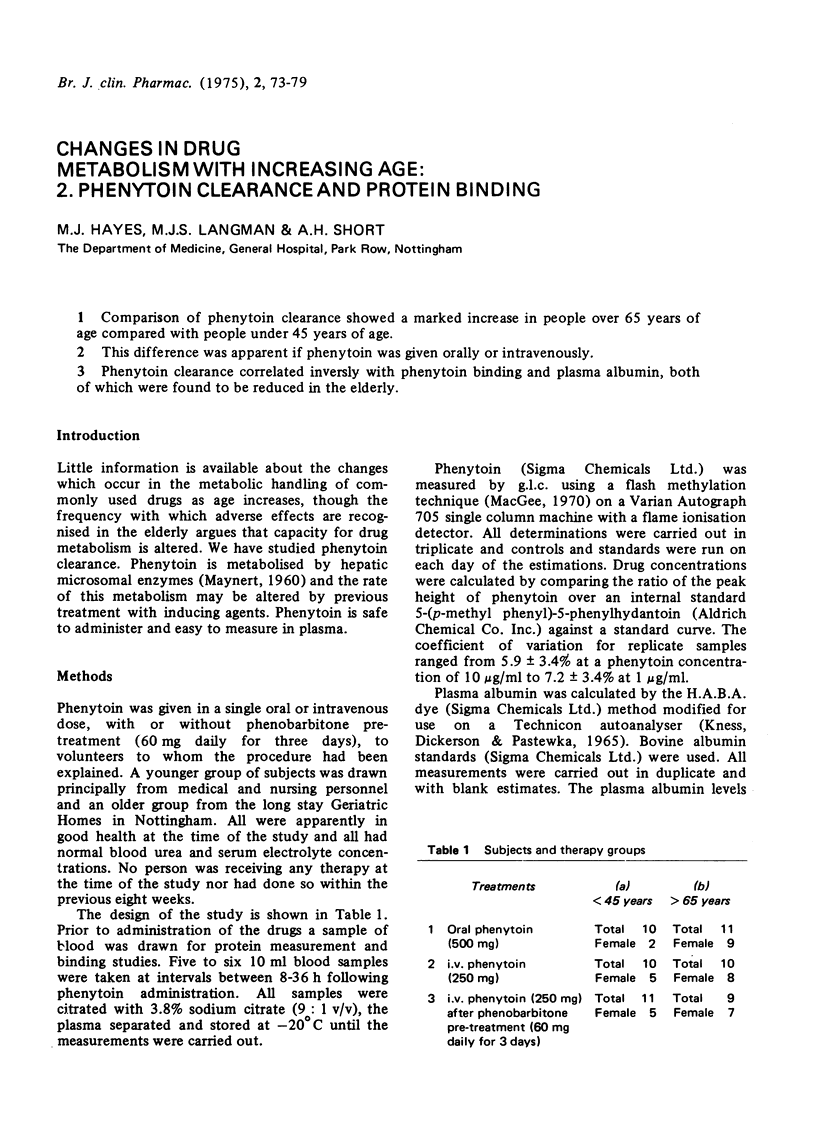
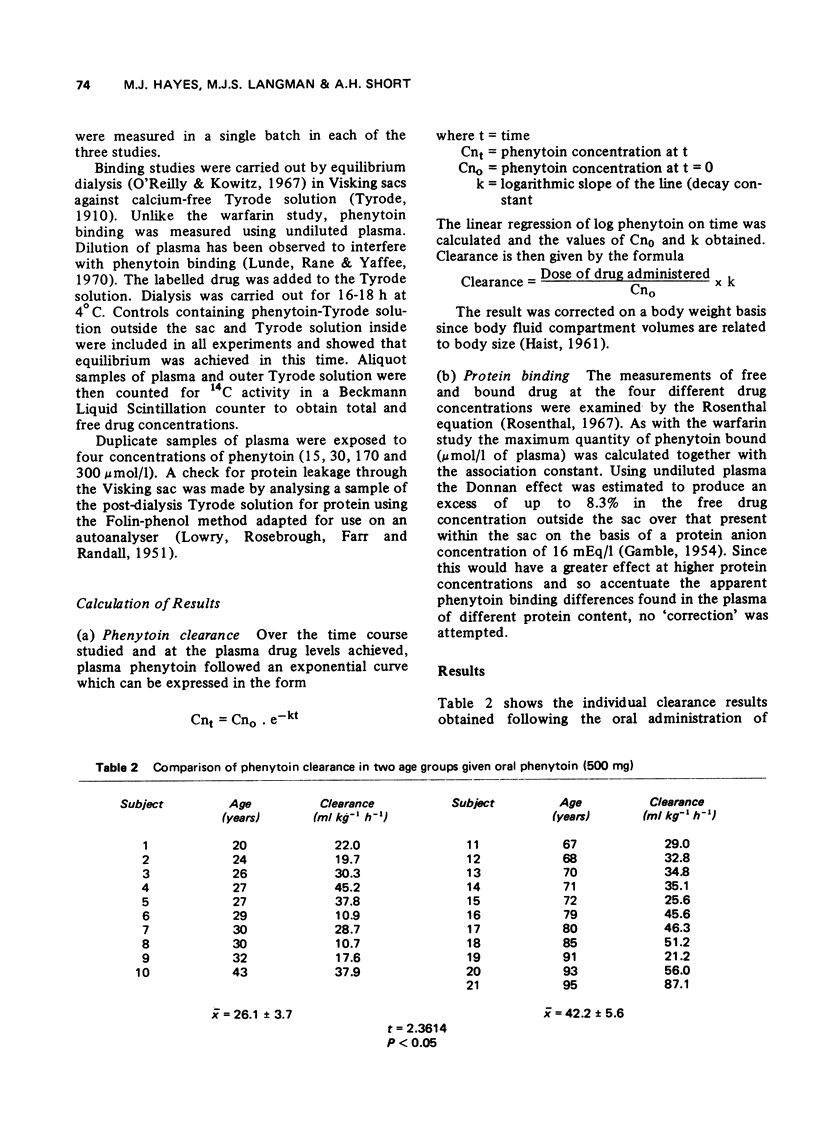
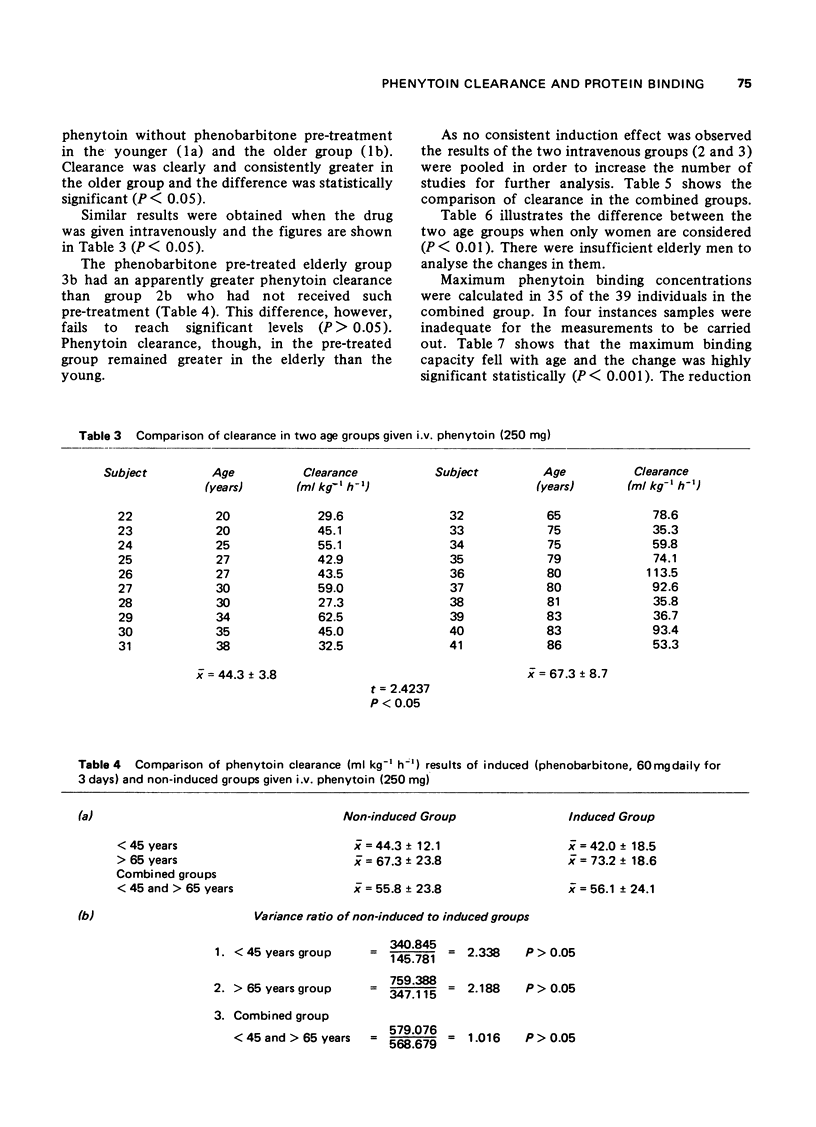
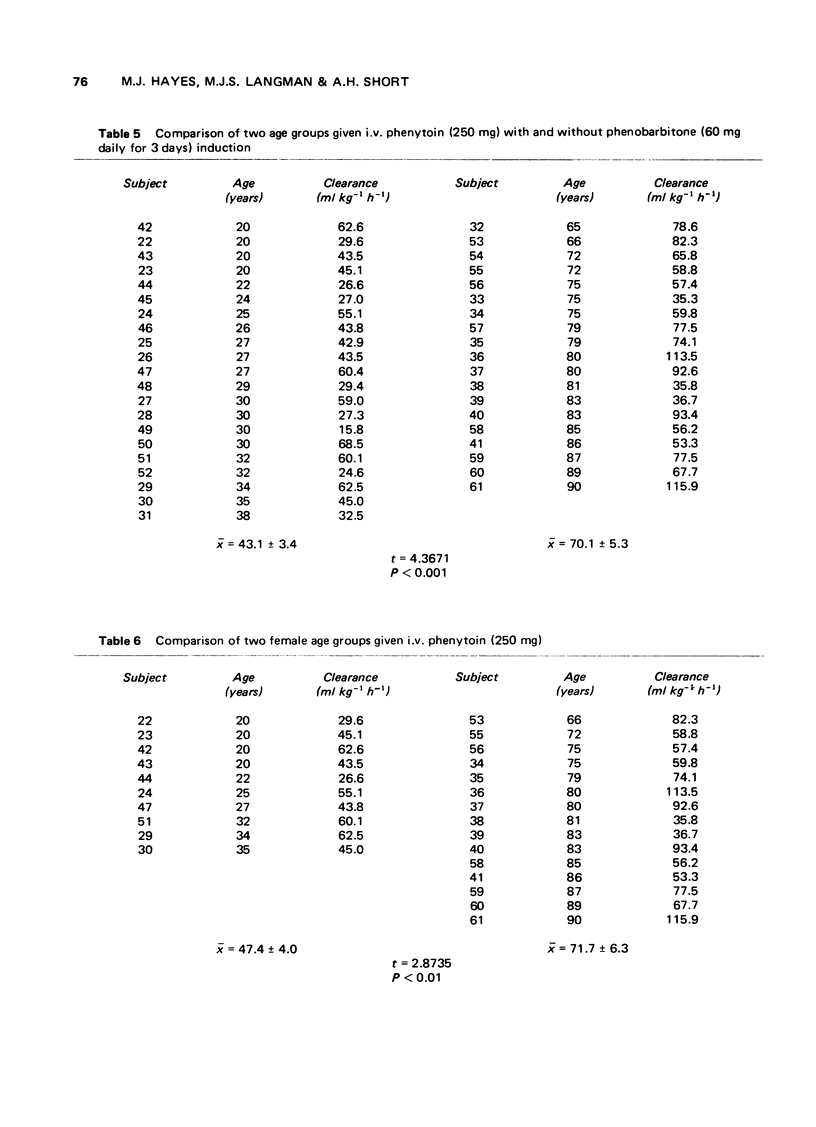
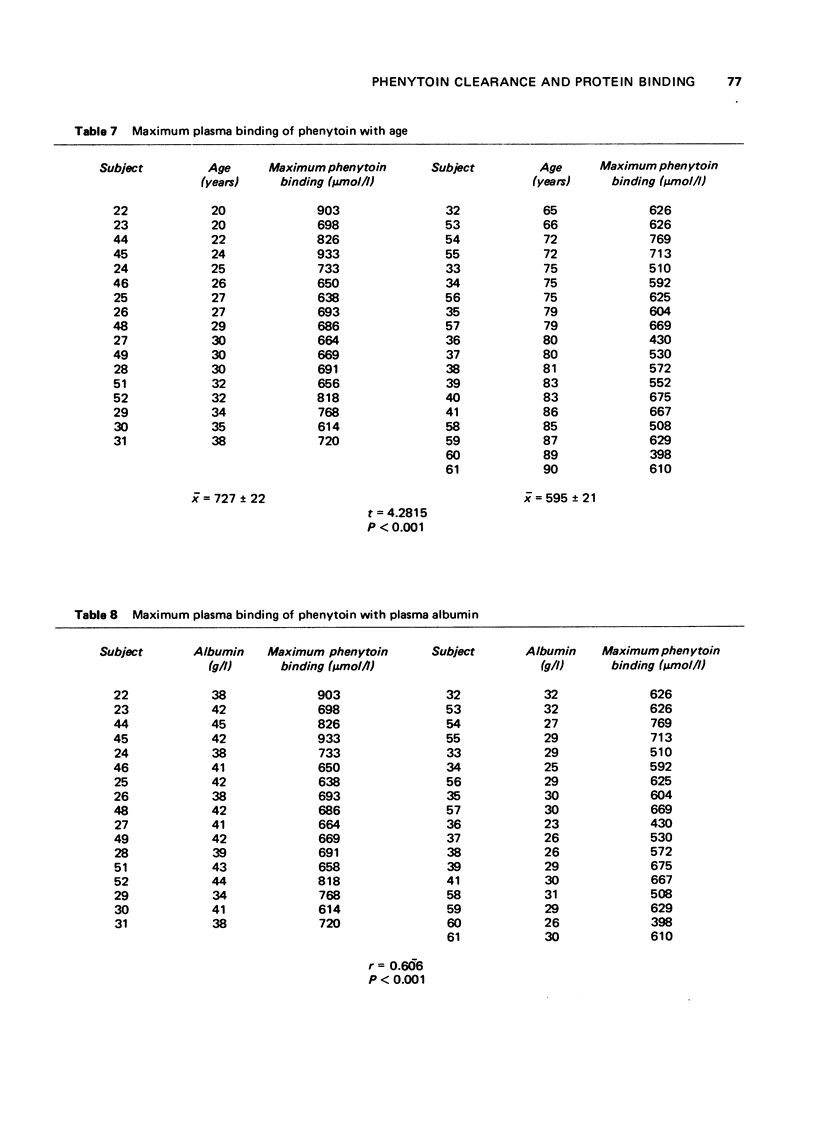
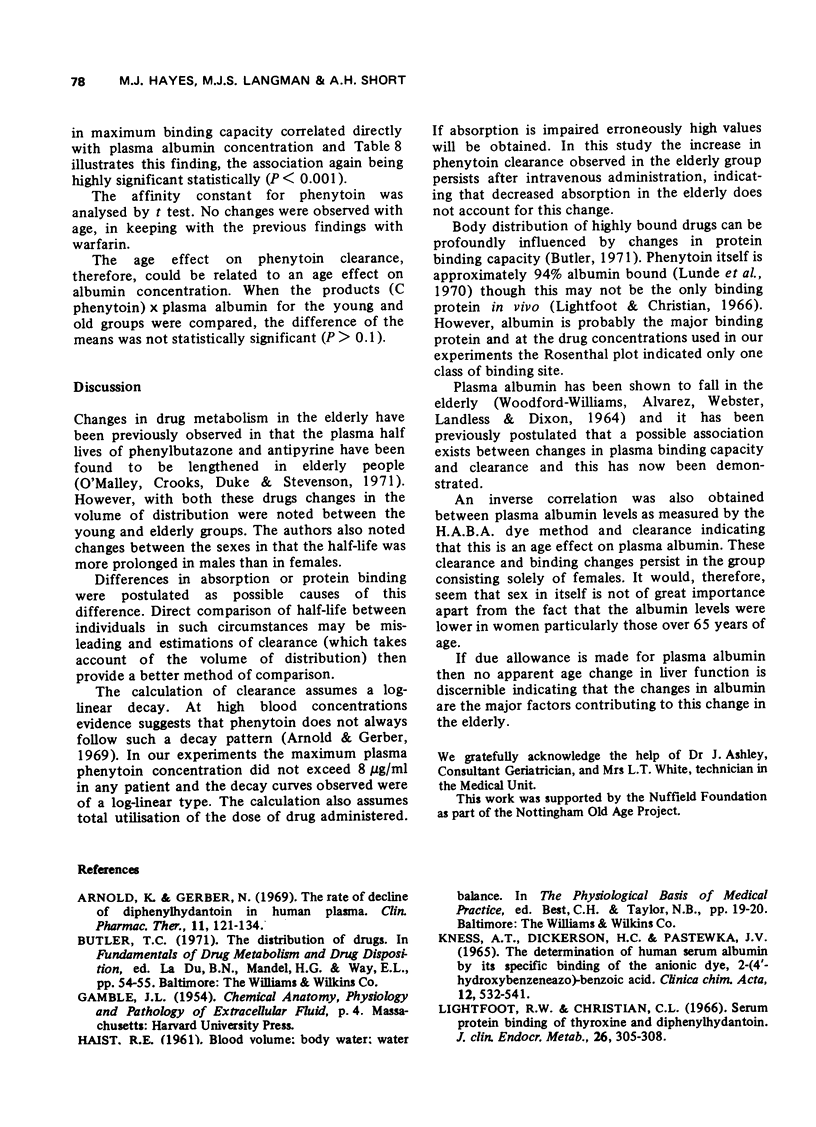
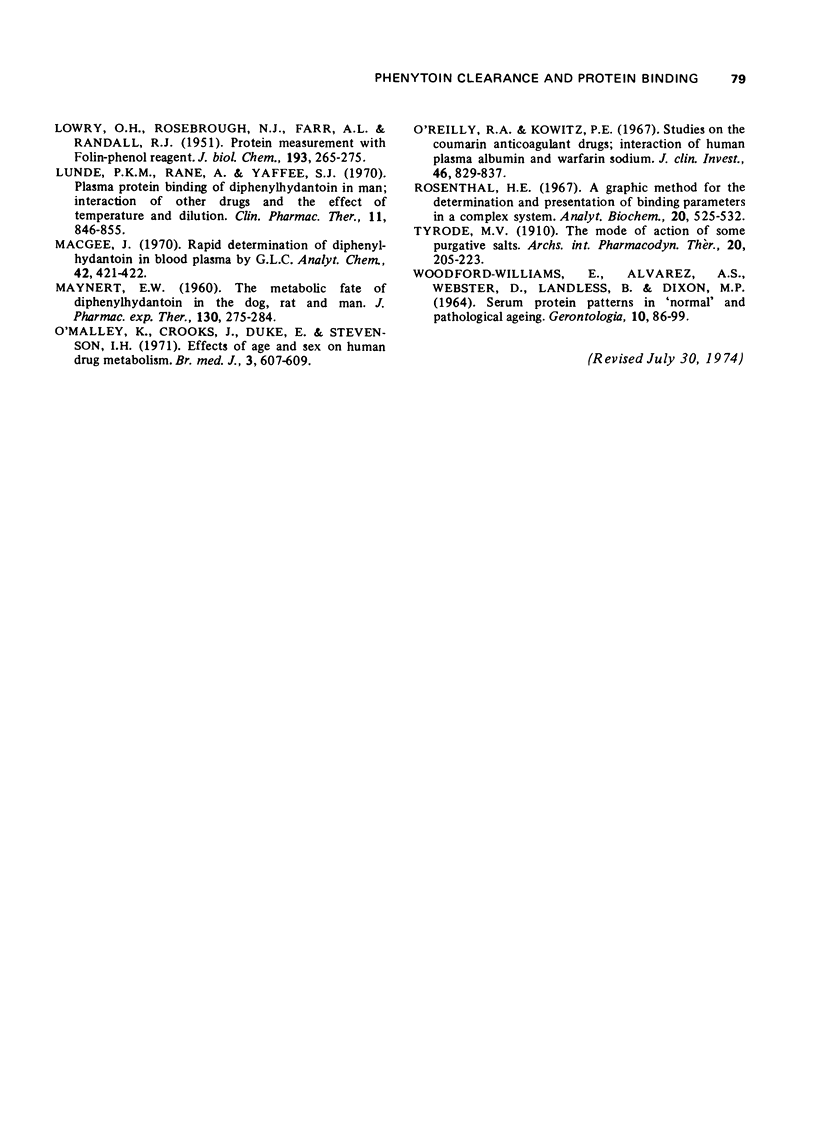
Selected References
These references are in PubMed. This may not be the complete list of references from this article.
- Arnold K., Gerber N. The rate of decline of diphenylhydantoin in human plasma. Clin Pharmacol Ther. 1970 Jan-Feb;11(1):121–134. doi: 10.1002/cpt1970111121. [DOI] [PubMed] [Google Scholar]
- LOWRY O. H., ROSEBROUGH N. J., FARR A. L., RANDALL R. J. Protein measurement with the Folin phenol reagent. J Biol Chem. 1951 Nov;193(1):265–275. [PubMed] [Google Scholar]
- Lightfoot R. W., Jr, Christian C. L. Serum protein binding of thyroxine and diphenylhydantoin. J Clin Endocrinol Metab. 1966 Mar;26(3):305–308. doi: 10.1210/jcem-26-3-305. [DOI] [PubMed] [Google Scholar]
- Lunde P. K., Rane A., Yaffe S. J., Lund L., Sjöqvist F. Plasma protein binding of diphenylhydantoin in man. Interaction with other drugs and the effect of temperature and plasma dilution. Clin Pharmacol Ther. 1970 Nov-Dec;11(6):846–855. doi: 10.1002/cpt1970116846. [DOI] [PubMed] [Google Scholar]
- MAYNERT E. W. The metabolic fate of diphenylhydantoin in the dog, rat and man. J Pharmacol Exp Ther. 1960 Nov;130:275–284. [PubMed] [Google Scholar]
- MacGee J. Rapid determination of diphenylhydantoin in blood plasma by gas-liquid chromatography. Anal Chem. 1970 Mar;42(3):421–422. doi: 10.1021/ac60285a024. [DOI] [PubMed] [Google Scholar]
- Ness A. T., Dickerson H. C., Pastewka J. V. The determination of human serum albumin by its specific binding of the anionic dye, 2-(4'-hydroxybenzeneazo)-benzoic acid. Clin Chim Acta. 1965 Nov;12(5):532–541. doi: 10.1016/0009-8981(65)90168-3. [DOI] [PubMed] [Google Scholar]
- O'Malley K., Crooks J., Duke E., Stevenson I. H. Effect of age and sex on human drug metabolism. Br Med J. 1971 Sep 11;3(5775):607–609. doi: 10.1136/bmj.3.5775.607. [DOI] [PMC free article] [PubMed] [Google Scholar]
- O'Reilly R. A. Studies on the coumarin anticoagulant drugs: interaction of human plasma albumin and warfarin sodium. J Clin Invest. 1967 May;46(5):829–837. doi: 10.1172/JCI105582. [DOI] [PMC free article] [PubMed] [Google Scholar]
- Rosenthal H. E. A graphic method for the determination and presentation of binding parameters in a complex system. Anal Biochem. 1967 Sep;20(3):525–532. doi: 10.1016/0003-2697(67)90297-7. [DOI] [PubMed] [Google Scholar]


